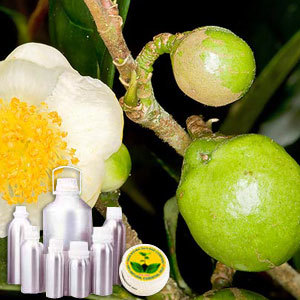 | Botonical Name | : | Thea sinensis L. |
 | CAS # | : | 84650-60-2 |
 | Country of Origin | : | France |
 | Color & Odor | : | amber viscous liquid with herbal odor |
 | Solubility | : | Soluble in alcohol, insoluble in water |
 | Specific Gravity | : | 1.130–1.35 @ 20°C |
 | Optical Rotation | : | (-)1.5 –(-)4 @ 15°C |
 | Refractive Index | : | 1.044 –1.054@ 20°C |
 | Flash Point | : | 56°C |
 | Plant Part Used | : | Leaves |
 | Extraction Method | : | Steam Distilled |
DESCRIPTION:
Green tea is a light absolute that is easily accessed in the top notes of a perfume as it is light in aroma. Its harmonizing abilities also lend themselves beautifully to Citruses, Clary Sage, Violet Leaf and Palmarosa. Further, when added to Palmarosa, it creates an even fresher and more lemonade like quality that has uplifting aroma that helps to lift up a heavier men's base of sages, cedars or tobaccos. CONSTITUENTS:
polyphenols, theaflavins. AROMATIC SUMMARY / NOTE / STRENGTH OF AROMA:
The relaxing aroma of this essential oil, sometimes described as like 'apples and straw' is an exotic and rich scent. It is commonly accepted as the best smelling of the Chamomiles.BLENDS WITH:
anise star eo and co2; arnica abs; artemisia oils; orange blossom abs; nutmeg eo, rosa bourbonia abs; ylang eo, co2 and abs; verbena COMMON NAMES:
Green Tea, bladder seaweed USES:
It is widely used as a modifier in perfumery industry. Further, the green tea extracts like its component EGCG has been used to prevent & treat a variety of cancers including breast, stomach & skin cancers. It is also used for improving mental alertness, lowering cholesterol levels, aiding in weight loss and protecting skin from sun damages. Further, these also help in fighting off more common ailments like cold and flu most more easily. 


































